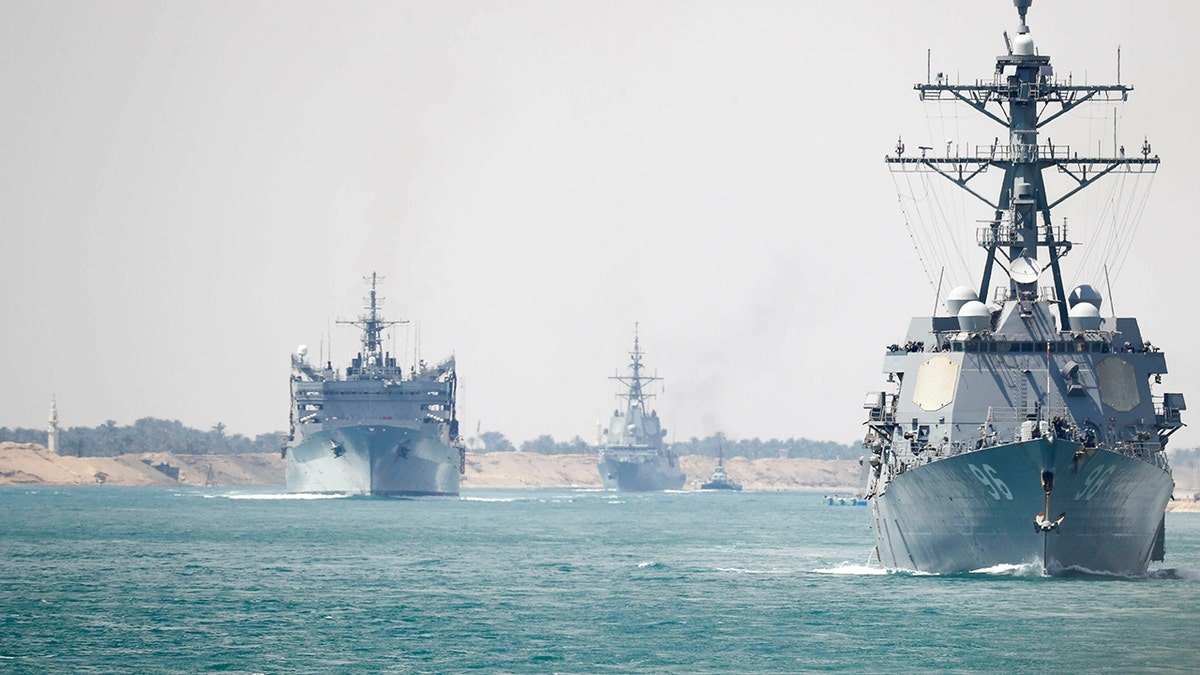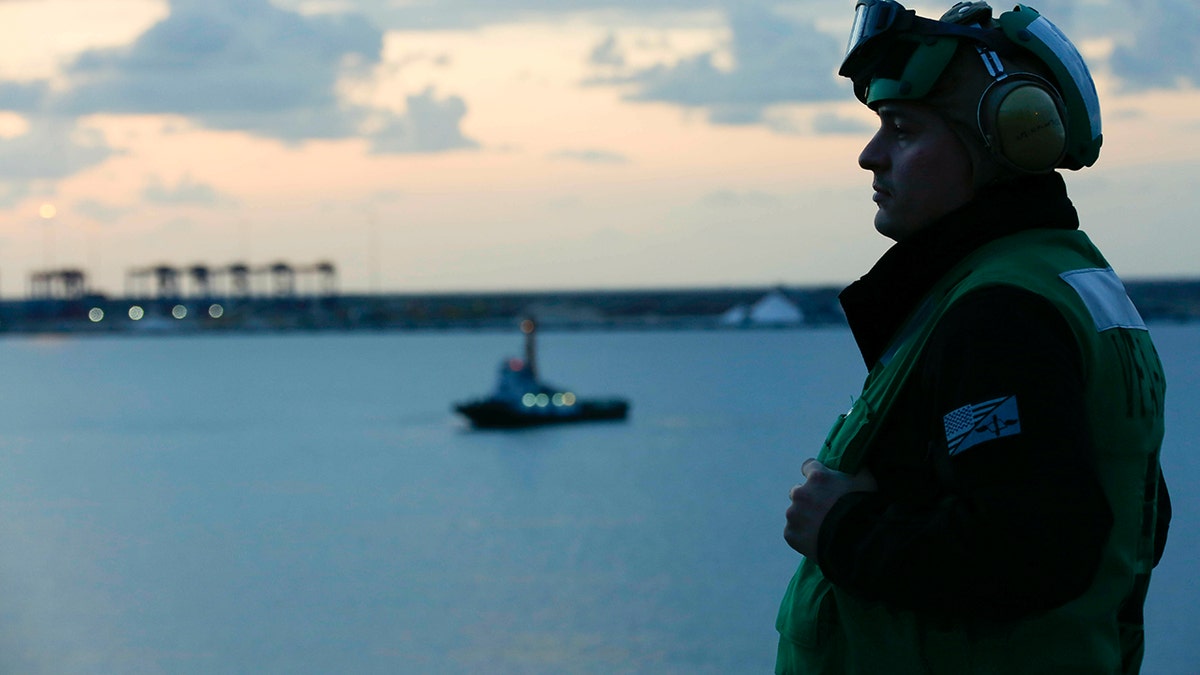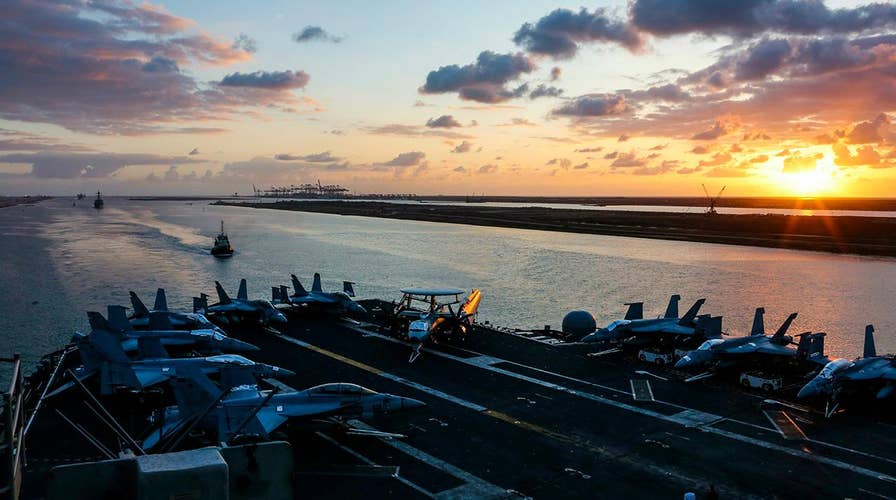US Boosting military presence in the Middle East amid escalating tensions with Iran
National security analyst Dr. Rebecca Grant provides insight.
A U.S. Navy fleet sent to the Persian Gulf to ward off a potential threat to American commercial interests represents a target instead of a serious threat, a senior Iranian Revolutionary Guards commander said Sunday.
The Pentagon on Friday announced plans to send the USS Arlington and the Patriot missile battery to the Middle East in an effort to deter actions from Iran. The maneuver came after national security adviser John Bolton said the U.S. was sending the USS Abraham Lincoln Carrier Strike Group and a bomber task force to the U.S. Central Command region, which includes the Middle East.
IRANIAN CLERIC THREATENS U.S. NAVY FLEET AMID WARNING REGIME COULD TARGET COMMERCIAL SHIPS

In this Thursday, May 9, 2019 photo released by the U.S. Navy, the Abraham Lincoln Carrier Strike Group transits the Suez Canal in Egypt. (Mass Communication Specialist 3rd Class Darion Chanelle Triplett/U.S. Navy via AP)
“An aircraft carrier that has at least 40 to 50 planes on it and 6,000 forces gathered within it was a serious threat for us in the past but now it is a target and the threats have switched to opportunities,” said Amirali Hajizadeh, the head of the IRG’s aerospace division, according to Iranian media.
Haijizadeh added: “If [the Americans] make a move, we will hit them in the head.”
U.S. Secretary of State Mike Pompeo told CNBC the move to deploy a U.S. military team in the Gulf came in response to intelligence reports about possible Iranian attacks.
“We've seen this reporting,” Pompeo said. “It's real. It appears to be something that is current, that is things we're worried about today.”
Pompeo added: “In the event that Iran decided to come after an American interest - whether that be in Iraq or Afghanistan or Yemen or any place in the Middle East - we are prepared to respond in an appropriate way … our aim is not war.”
Iranian naval commander Rear Admiral Hossien Khanzadi demanded the U.S. leave the region, Reuters reported, citing the Iranian media.
An Iranian cleric warned last week that Iran could easily destroy a U.S. naval fleet.

In this Thursday, May 9, 2019 photo released by the U.S. Navy, Aviation Maintenance Administrationman 2nd Class Jason Caldwell, assigned to the "Jolly Rogers" of Strike Fighter Squadron 103, observes sunrise on the flight deck of the Nimitz-class aircraft carrier USS Abraham Lincoln while transiting the Suez Canal in Egypt. (Mass Communication Specialist 3rd Class Amber Smalley, U.S. Navy via AP)
“Their billion[-dollar] fleet can be destroyed with one missile," Ayatollah Tabatabai-Nejad said.
“If they attempt any move, they will ... [face] dozens of missiles because at that time [government] officials won't be in charge to act cautiously, but instead things will be in the hands of [Ayatollah Ali Khamenei],” he warned.
CLICK HERE TO GET THE FOX NEWS APP
The heated rhetoric has capped a multiyear standoff over the rogue nation's nuclear program. President Trump's administration angered the regime when he withdrew from an Obama-era nuclear deal granting Iran sanctions relief in exchange for limited monitoring accommodations.
Fox News’ Sam Dorman and Elizabeth Zwirz contributed to this report.

